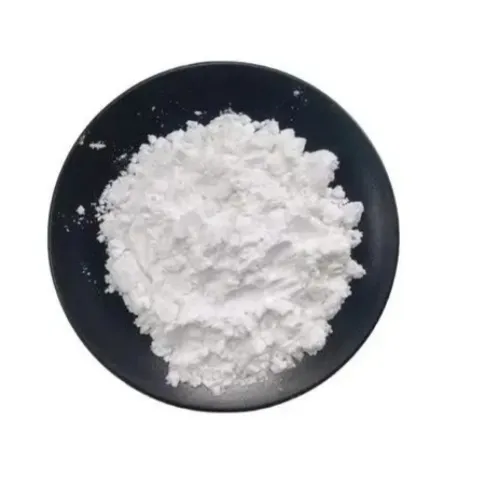Warning: Undefined array key "title" in /home/www/wwwroot/HTML/www.exportstart.com/wp-content/themes/1198/header.php on line 6
Warning: Undefined array key "file" in /home/www/wwwroot/HTML/www.exportstart.com/wp-content/themes/1198/header.php on line 7
Warning: Undefined array key "title" in /home/www/wwwroot/HTML/www.exportstart.com/wp-content/themes/1198/header.php on line 7
Warning: Undefined array key "title" in /home/www/wwwroot/HTML/www.exportstart.com/wp-content/themes/1198/header.php on line 7
- Afrikaans
- Albanian
- Amharic
- Arabic
- Armenian
- Azerbaijani
- Basque
- Belarusian
- Bengali
- Bosnian
- Bulgarian
- Catalan
- Cebuano
- China
- China (Taiwan)
- Corsican
- Croatian
- Czech
- Danish
- Dutch
- English
- Esperanto
- Estonian
- Finnish
- French
- Frisian
- Galician
- Georgian
- German
- Greek
- Gujarati
- Haitian Creole
- hausa
- hawaiian
- Hebrew
- Hindi
- Miao
- Hungarian
- Icelandic
- igbo
- Indonesian
- irish
- Italian
- Japanese
- Javanese
- Kannada
- kazakh
- Khmer
- Rwandese
- Korean
- Kurdish
- Kyrgyz
- Lao
- Latin
- Latvian
- Lithuanian
- Luxembourgish
- Macedonian
- Malgashi
- Malay
- Malayalam
- Maltese
- Maori
- Marathi
- Mongolian
- Myanmar
- Nepali
- Norwegian
- Norwegian
- Occitan
- Pashto
- Persian
- Polish
- Portuguese
- Punjabi
- Romanian
- Russian
- Samoan
- Scottish Gaelic
- Serbian
- Sesotho
- Shona
- Sindhi
- Sinhala
- Slovak
- Slovenian
- Somali
- Spanish
- Sundanese
- Swahili
- Swedish
- Tagalog
- Tajik
- Tamil
- Tatar
- Telugu
- Thai
- Turkish
- Turkmen
- Ukrainian
- Urdu
- Uighur
- Uzbek
- Vietnamese
- Welsh
- Bantu
- Yiddish
- Yoruba
- Zulu
Dec . 03, 2024 20:59 Back to list
Exploring the Uses and Benefits of 99% Diethanolamine in Various Industries
Diethanolamine (DEA) Properties, Uses, and Safety Considerations
Diethanolamine (DEA) is an organic compound with the molecular formula C4H11NO2. It belongs to the class of chemicals known as alkanolamines, which are substances that possess both amine and alcohol functional groups. DEA is characterized by its viscous, colorless liquid form and mild odor. As a chemical substance commonly utilized in various industrial applications, it has garnered attention for its functional properties, versatility, and safety considerations.
Properties of Diethanolamine
Diethanolamine is soluble in water and exhibits hygroscopic properties, meaning it can absorb moisture from the air. Its melting point is around 27.7 degrees Celsius, while its boiling point is approximately 210 degrees Celsius. DEA has a density of about 1.1 g/cm³, which makes it denser than water. The functional groups present in DEA contribute to its chemical reactivity, allowing it to participate in various chemical reactions, such as acylation and amination.
The presence of two hydroxyl (-OH) groups makes DEA a suitable candidate for numerous applications, particularly as a surfactant and a pH balancer. Diethanolamine can form stable emulsions and enhance the solubility of various substances, making it invaluable in different chemical formulations.
Applications of Diethanolamine
The versatility of DEA allows it to serve multiple roles across a range of industries. One prominent application is its use in the manufacturing of personal care and cosmetic products. Its emulsifying properties are employed in lotions, creams, and shampoos, where it acts as a stabilizer, providing a smooth texture and facilitating the blending of oil and water components.
In the agricultural sector, DEA is utilized as a component in herbicides, fungicides, and insecticides, assisting in the formulation of effective pest control products. Moreover, its ability to neutralize acidity makes it useful in the production of liquid fertilizers, enhancing the nutrient availability for crops.
diethanolamine 99

DEA is also a common ingredient in cleaning products, detergents, and industrial applications. Its surfactant properties enable it to break down grease and oils, making it effective in degreasers and industrial cleaners. Additionally, in the chemical manufacturing sector, diethanolamine is utilized in the synthesis of various chemicals, including surfactants, plasticizers, and textile fibers.
Safety Considerations
While DEA possesses numerous beneficial properties, it is essential to approach its use with caution. Exposure to diethanolamine can occur through inhalation, skin contact, or ingestion. Safety data indicates that DEA may cause irritation to the skin and eyes, emphasizing the need for appropriate personal protective equipment (PPE) when handling the substance.
Furthermore, the potential for systemic effects from prolonged exposure necessitates adherence to safety regulations and guidelines in industrial settings. Notably, DEA has raised some concerns regarding its carcinogenic potential, particularly related to the formation of nitrosamines when reacting with nitrosating agents. This has led to restrictions and guidelines governing its use in cosmetic products in some regions.
Regulatory bodies such as the Environmental Protection Agency (EPA) and the European Chemicals Agency (ECHA) continually assess the safety of chemicals, including diethanolamine. As research evolves, recommendations may change, impacting the formulation and usage levels in various applications.
Conclusion
Diethanolamine is a multifaceted compound that plays a significant role in diverse industries, from personal care to agriculture and cleaning products. Its unique combination of properties allows it to function effectively as a surfactant, emulsifier, and pH stabilizer. Nonetheless, the safety considerations surrounding DEA necessitate careful handling and adherence to regulatory guidelines to mitigate potential health risks. As industries evolve and new sustainability goals emerge, the role of diethanolamine will likely continue to adapt, highlighting the importance of balancing utility with safety in chemical usage.
Latest news
-
Certifications for Vegetarian and Xanthan Gum Vegetarian
NewsJun.17,2025
-
Sustainability Trends Reshaping the SLES N70 Market
NewsJun.17,2025
-
Propylene Glycol Use in Vaccines: Balancing Function and Perception
NewsJun.17,2025
-
Petroleum Jelly in Skincare: Balancing Benefits and Backlash
NewsJun.17,2025
-
Energy Price Volatility and Ripple Effect on Caprolactam Markets
NewsJun.17,2025
-
Spectroscopic Techniques for Adipic Acid Molecular Weight
NewsJun.17,2025

